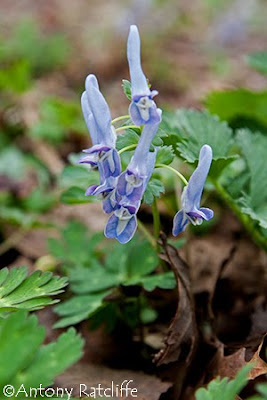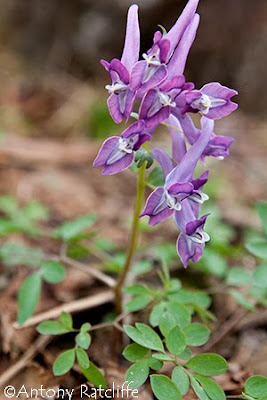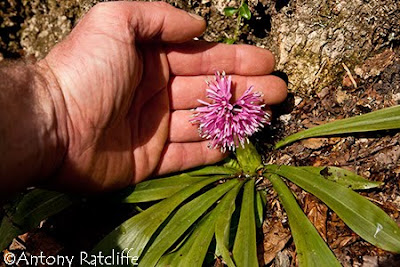Togakushi in Spring
Well the snow in the mountainous region of Togakushi in Japan has all but gone. The harsh cold winter has subsided and only in the shade spots of the forest can the remnants of that still be seen with heaps of snow still lingering. It has finally began to warm up and during the past week temperatures reached a comfortable 12-20 degrees celsius with clear blue skies which in turn has brought the resident birds and wildlife back to the forest in search of food along with a few floral delights, like old friends paying a visit.
The wild spring flowers are finally making a welcome appearance throughout the forest.
Heloniopsis orientalis
One flowering plant in particular that is famous in this part of Japan and and throughout Japan in general is Erythronium japonicum which is otherwise known as the 'Dogs Tooth Violet' in English and in Japanese it is known as Katakuri (片栗).
Katakuri (Erythronium japonicum)
Katakuri is a species of Lily native to Japan, Korea and northeastern China. A starch is processed from the corm of this plant and often used in cooking as a thickener, in Britain cornflour is used for the same purpose.
Katakuri starch is known as Katakuriko (片栗粉) but has lately been replaced by potato starch which is a much cheaper alternative. The flowers are very vibrant in a dry leafless forest and contrast superbly against the brown autumn leaves from the previous year. Spring is definitely here in the high places when this plant pops up through it's winter futon of forest detritus.
Dogs Tooth Violet Dogs Tooth Violet
Most of the wild forest flowers the first of which come out at the end of April and the beginning of May tend to grow along the wet banks of the forest streams which are overflowing at this time of year due to the melting snow that runs down from the ski slopes into the valley.
Another interesting flowering perennial plant that is particularly hydrophylic or water loving is Heloniopsis orientalis otherwise known as the Oriental Swamp Pink or Shoujou-bakama (猩々袴) in Japanese
which is often found growing along rocky streams and on cool moist mountain slopes in Japan.
Oriental Swamp Pink
Anemones can also be seen flowering in abundance at this time of year. One specific to the area here is Anemone pseudoaltaica or Kikuzaki-Ichige (キクザキイチゲ) in Japanese. These beautiful little wildflowers make excellent ground cover forming a stunning floral carpet on the forest floor during spring and range in colour from white through pink and blue.
Anemone Pseudoaltaica
The tri-leaved Trilium smallii or Enrei-Sou in Japanese (エンレイソウ) are also cropping up along the forest streams. This plant is native to regions of North America and Asia. The plant is made up of three leaf like bracts with only one flower being produced per plant. In some states of America it is illegal to pick a Trillium as it seriously injures the plant by preventing the leaf like bracts providing food to the rhizome for the next year and the plant itself can actually take years to recover.
Trillium Smallii
Trillium Smallii
The small flowered Corydalis ambigua otherwise known as Ezo-engosaku (エゾエンゴサク) in Japanese are also in bloom at the moment and varying in colour from blue to a purpley pink, growing no more than 4-5" inches in height they seem to adore pastures, growing near the forest perimeter amongst the fresh green grass. It's a medicinal plant of which the root has reportedly been used for over a thousand years as a means of mitigating pain due its analgesic, antispasmodic and sedative effects.


And finally we have one more very popular flowering plant at this time of year that grows on marshy land, it thrives in wet conditions and is a big draw for visitors to the area wether they be general sightseers or photographers. It is the Asian Skunk Cabbage (Lysichiton camtschatcense) otherwise known as Mizubasho (水芭蕉) in Japanese. This perennial plant grows in abundance, so much in fact that wooden walkways or platforms that are raised above the waters have been set up by the Togakushi Council within the wet areas of the forests for visitors to view the colonies of this plant. You will often see the yellow flowering Marsh Marigold (Caltha palustris) or Ryukinka (リュウキンカ) in Japanese growing freely as a companion plant amongst skunk cabbage making the woodland scene all the more impressive.
Asian Skunk Cabbage (Lysichiton camtschatcense) and Marsh Marigold (Caltha palustris)
Labels: Asia, Flora, Flowers, Japan, Japanese, Nature, Photography, Spring, Togakushi, Wild Flowers
